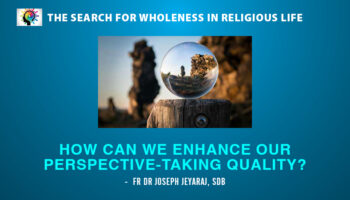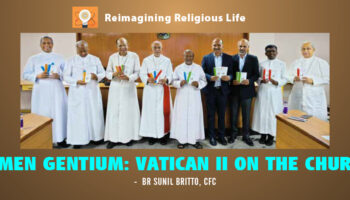2 October: International Day of Non-Violence
The United Nations observes this Day annually on the birthday of Mahatma Gandhi, one of the most influential political activists of all time. He was born in India in 1869 and through his efforts, India gained its freedom on 15 August 1947. He was assassinated on 30 January 1948.
Gandhi put forward the notion of “non-violence” and the tremendous impact of this form of social response as a tool for the peaceful resolution of differences and “to secure a culture of peace, tolerance, understanding and non-violence“. He saw the use of violence to achieve peace as completely irrational.
Rejecting the idea that forgiveness is a sign of weakness, Gandhiji would say, “The weak can never forgive. Forgiveness is the attribute of the strong.”
Can’t we hate those who do us harm? No, he insisted, “hatred can only be overcome by love.”
We cannot expect others to change, while we refuse to. Hence his famous saying: “Be the change you want to see in the world.”
This world has had its share of bloody wars that ended countless innocent lives and led to widespread destruction. Non-violence is not pacifism. It rejects the use of physical violence and advocates other means like protests and persuasion, marches and vigils, multi-faith prayer meetings, candle-light ceremonies, civil disobedience to unjust laws, non-cooperation and non-violent intervention, such as blockades, occupations and sit-ins, to achieve social or political change.
There are people in this world who have made the changes they thought necessary, without the use of violence or brute force. To name but a few – Martin Luther King, Rosa Parks, John Lennon, Nelson Mandela.
These are the type of people that the International Day of Non-Violence celebrates. Read or enact their biographies. Spread their message of non-violence. Find out what motivated them to act as they did, what helped keep them strong even when they saw terrible things happening all around them. These stories are fascinating and inspiring. They teach us the virtues of bravery, compassion, and perseverance. Spreading hatred and violence may look clever, and is easier, but it is self-destructive. No lasting solutions are found through violence.
———————————————————————————————————————————————————————————–
11 October: International Day of the Girl Child
The International Day of Girls is declared by the United Nations to raise awareness of gender inequality faced by girls internationally, especially regarding education, nutrition, child marriage, protection from discrimination, violence against women, legal and medical rights.
Statistics: The world’s 1.1 billion girls are a formidable source of power, energy, and creativity. But
- More than 62 million girls around the world have no access to education.
- Many global development plans do not include or consider Girls.
- Globally, one in four Girls are married before age 18.
- Girls, ages 5 to 14, spend more than 160 million hours more on household chores than boys of the same age do.
- Girls around the world are vulnerable to acts of sexual violence and the perpetrators often go unpunished.
The Day of Girls helps raise awareness not only of the issues that Girls face, but also what is likely to happen when those problems are solved. For example, educating Girls helps reduce the rate of child marriage and disease. It helps strengthen the economy by helping Girls to have access to higher-paying jobs.
The empowerment of and investment in girls are critical for:
- breaking the cycle of discrimination and violence
- economic growth, the eradication of poverty and extreme poverty
- promoting and protecting the full and effective enjoyment of their human rights, their active participation in decision-making processes and the active support and engagement of their parents, legal guardians, families and care providers, as well as boys, men and the wider community.
In India, there are a number of things we need to attend to urgently: the killing of female fetuses and of newly born girls (which causes the terrible male-female ration in several states in India); child marriages; the lack of educational opportunities for girls; lower wages paid to women workers; domestic violence; the financial and sexual exploitation of domestic workers, most of whom are women; the lack of toilets in homes and in schools, which puts the women and girls to great inconvenience and causes health problems.
The celebration of the day also “reflects the successful emergence of Girls and young women as a distinct force in development policy, programming, campaigning and research.”
To read the entire article, click Subscribe
Sr. Esme da Cunha fdcc





